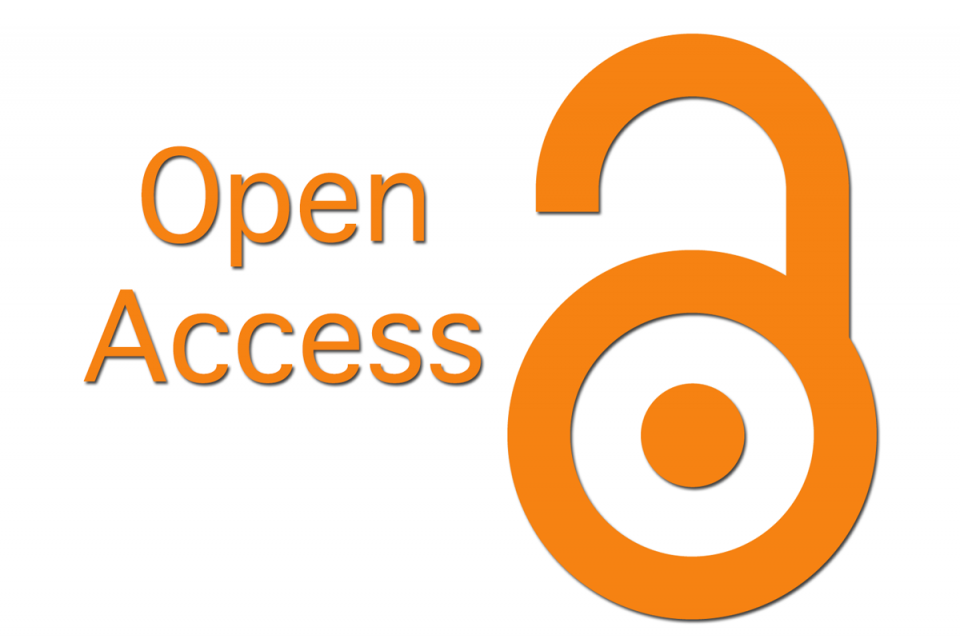Reliability and Validity analysis of Tendon morphology assessment during repeated cyclic loading
DOI:
https://doi.org/10.48047/HM.08.2.2022.725-735Keywords:
Tendon Morphology, Cyclic Loading, Ordinal Scales, Reliability Analysis, Digital Imaging, Anisotropy AssessmentAbstract
Background: The multi-scale form and function of biological tissues are domains of interest for clinicians and biologists. Common ordinal categorical assessments are widely used in the observational and histological evaluation of tissues. Ordinal scales are commonly reported in the literature, yet few studies report the reliability of the assessors' classification. Objective: The development of digital algorithms often relies on the ordinal construct of the original scales with the assumption that the validity of the digital algorithm is self-evident as derived from the valid observational scale. Methodology: The experimental methodology included testing White New Zealand Rabbit Achilles tendons at 3%, 6%, 9%, and 6% strain GAG-depleted tendons. Tendon stiffness and morphological changes were assessed at multiple scales with digitally imaged liner modulus and atomic force microscopy. Test-retest protocols and statistical analysis were done with Weighted Kappa to ensure reliability. Results: Findings have shown almost perfect within tester and substantial agreements of ordinal classifications (weighted Kappa > 0.98 and > 0.77). The classifications demonstrated a clear dose-response, i.e., more significant damage with increased tendon strain and repetitions. The specific finding emphasizes that the loss of tenocyte spindle-shaped is highly associated with loss of tendon stiffness, whereas other circularity classifications (e.g. Elongated) add little further information. Digital assessment of anisotropy did not demonstrate a dose-response after the initial preconditioning. Therefore, the testing properties of scales for tendon morphology require reporting of both validity (esp. new algorithms) and reliability. Conclusion: Furthermore, digital algorithms may improve data reliability and statistical robustness as a continuous variable but still require validation.
Downloads
References
Hunter S, Werth J, James D, Lambrianides Y, Smith K, Karamanidis K, et al. Reliability and accuracy of a time-efficient method for the assessment of Achilles tendon mechanical properties by ultrasonography. Sensors. 2022;22(7):2549.
Firminger CR, Edwards WB. Effects of cyclic loading on the mechanical properties and failure of human patellar tendon. Journal of Biomechanics. 2021;120:110345.
Hugh E. Measurement of tendon transverse stiffness in people with Achilles tendinopathy: a cross-sectional study. 2018.
Buffey AJ, Onambélé-Pearson GL, Erskine RM, Tomlinson DJ. The validity and reliability of the Achilles tendon moment arm assessed with dual-energy X-ray absorptiometry, relative to MRI and ultrasound assessments. Journal of Biomechanics. 2020;116:110204.
Masic A, Bertinetti L, Schuetz R, et al. Observations of multi-scale, stress-induced changes of collagen orientation in tendon by polarized Raman spectroscopy. Biomacromolecules. 2011 Nov;12(11):3989-96.
Miller KS, Connizzo BK, Feeney E, Soslowsky LJ. Characterizing local collagen fiber re-alignment and crimp behavior throughout mechanical testing in a mature mouse supraspinatus tendon model. Journal of Biomechanics. 2012 Aug;45(12):2061-5.
Franchi M, Raspanti M, Dell'Orbo C, et al. Different crimp patterns in collagen fibrils relate to the subfibrillar arrangement. Connective Tissue Research. 2008;49(2):85-91.
Hurschler C, Provenzano PP, Vanderby R Jr. Scanning electron microscopic characterization of healing and normal rat ligament microstructure under slack and loaded conditions. Connective Tissue Research. 2003;44(2):59-68.
Matyas J, Edwards P, Miniaci A, et al. Ligament tension affects nuclear shape in situ: an in vitro study. Connective Tissue Research. 1994;31(1):45-53.
Screen HR, Lee DA, Bader DL, Shelton JC. Development of a technique to determine strains in tendons using the cell nuclei. Biorheology. 2003;40(1-3):361-8.
Thorpe CT, Chaudhry S, Lei II, et al. Tendon overload results in alterations in cell shape and increased markers of inflammation and matrix degradation. Scandinavian Journal of Medicine & Science in Sports. 2015 Aug;25(4):e381-91.
Lake SP, Miller KS, Elliott DM, Soslowsky LJ. Effect of fiber distribution and realignment on the nonlinear and inhomogeneous mechanical properties of human supraspinatus tendon under longitudinal tensile loading. Journal of Orthopaedic Research. 2009 Dec;27(12):1596-602.
Arnoczky SP, Lavagnino M, Whallon JH, Hoonjan A. In situ cell nucleus deformation in tendons under tensile load; a morphological analysis using confocal laser microscopy. Journal of Orthopaedic Research. 2002 Jan;20(1):29-35.
Magra M, Maffulli N. Genetic aspects of tendinopathy. Journal of Science and Medicine in Sport. 2008 Jun;11(3):243-7.
Voleti PB, Buckley MR, Soslowsky LJ. Tendon healing: repair and regeneration. Annual Review of Biomedical Engineering. 2012;14:47-71.
Szczesny SE, Elliott DM. Incorporating plasticity of the interfibrillar matrix in shear lag models is necessary to replicate the multi-scale mechanics of tendon fascicles. Journal of the Mechanical Behavior of Biomedical Materials. 2014 Dec;40:325-38.
Fung DT, Wang VM, Andarawis-Puri N, et al. Early response to tendon fatigue damage accumulation in a novel in vivo model. Journal of Biomechanics. 2010;43(2):274-9.
Chen J, Yu Q, Wu B, et al. Autologous tenocyte therapy for experimental Achilles tendinopathy in a rabbit model. Tissue Engineering Part A. 2011 Aug;17(15-16):2037-48.
Kartus J, Movin T, Papadogiannakis N, Christensen LR, Lindahl S, Karlsson J. A radiographic and histologic evaluation of the patellar tendon after harvesting its central third. The American Journal of Sports Medicine. 2000 Mar;28(2):218-26.
Movin T, Gad A, Reinholt FP, Rolf C. Tendon pathology in long-standing achillodynia: biopsy findings in 40 patients. Acta Orthopaedica Scandinavica. 1997 Apr;68(2):170-5.
Movin T. Aspects of aetiology, pathoanatomy and diagnostic methods in chronic mid-portion achillodynia. 1999.
Maffulli N, Barrass V, Ewen SW. Light microscopic histology of Achilles tendon ruptures: A comparison with unruptured tendons. American Journal of Sports Medicine. 2000 Nov-Dec;28(6):857-63.
Xu Y, Murrell GA. The basic science of tendinopathy. Clinical Orthopaedics and Related Research. 2008 Jul;466(7):1528-38.
Schöchlin M, Weissinger SE, Brandes AR, Herrmann M, Möller P, Lennerz JK. A nuclear circularity-based classifier for diagnostic distinction of desmoplastic from spindle cell melanoma in digitized histological images. Journal of Pathology Informatics. 2014;5(1):40.
Dickson DM, Fawole HO, Newcombe L, Smith SL, Hendry GJ. Reliability of ultrasound strain elastography in the assessment of the quadriceps and patellar tendon in healthy adults. Ultrasound. 2019.
Al Makhzoomi AK, Kirk TB, Allison GT. A multi-scale study of morphological changes in tendons following repeated cyclic loading. Journal of Biomechanics. 2021 Nov 9;128:110790.
Al Makhzoomi AK, Kirk TB, Allison GT. An AFM study of the nanostructural response of New Zealand white rabbit Achilles tendons to cyclic loading. Microscopy Research and Technique. 2022 Feb;85(2):728-37.
Al Makhzoomi AK, Kirk TB, Dye DE, Allison GT. Contribution of glycosaminoglycans to the structural and mechanical properties of tendons: A multi-scale study. Journal of Biomechanics. 2021 Nov 9;128:110796.
Al Makhzoomi AK, Kirk TB, Dye DE, Allison GT. The influence of glycosaminoglycan proteoglycan side chains on tensile force transmission and the nanostructural properties of Achilles tendons. Microscopy Research and Technique. 2022 Jan;85(1):233-43.
Park MS, Kang KJ, Jang SJ, Lee JY, Chang SJ. Evaluating test-retest reliability in patient-reported outcome measures for older people: A systematic review. International Journal of Nursing Studies. 2017;79:58-69.
Landis JR, Koch GG. The measurement of observer agreement for categorical data. Biometrics. 1977 Mar;33(1):159-74.
Biasutti S, Dart A, Smith M, Blaker C, Clarke E, Jeffcott L, et al. Spatiotemporal variations in gene expression, histology, and biomechanics in an ovine model of tendinopathy. PLoS ONE. 2017;12:e0185282.
Chatterjee M, Evans MK, Bell R, Nguyen PK, Kamalitdinov TB, Korntner S, et al. Histological and immunohistochemical guide to tendon tissue. Journal of Orthopaedic Research. 2023;41:2114-32.
Edwards WB. Modeling overuse injuries in sport as a mechanical fatigue phenomenon. Exercise and Sport Sciences Reviews. 2018;46:224-31.
Hussien AA, Knell R, Renoux F, Wunderli SL, Niederoest B, Foolen J, et al. Sustained mechanical tension governs fibrogenic activation of tendon stromal cells in systemic sclerosis. bioRxiv. 2021.
Donderwinkel I, Tuan RS, Cameron NR, Frith JE. Tendon tissue engineering: Current progress towards an optimized tenogenic differentiation protocol for human stem cells. Acta Biomaterialia. 2022;145:25-42.
Dietrich-Zagonel F, Hammerman M, Bernhardsson M, Eliasson P. Effect of storage and preconditioning of healing rat Achilles tendon on structural and mechanical properties. Scientific Reports. 2021;11.
Downloads
Published
Issue
Section
License
Copyright (c) 2025 Anas K. Al Makhzoomi, Garry. T Allison, Mohammad S. Khalifeh, Omran H. Alameri, Mu`ath Q. Al-ghadi (Author)

This work is licensed under a Creative Commons Attribution 4.0 International License.
You are free to:
- Share — copy and redistribute the material in any medium or format for any purpose, even commercially.
- Adapt — remix, transform, and build upon the material for any purpose, even commercially.
- The licensor cannot revoke these freedoms as long as you follow the license terms.
Under the following terms:
- Attribution — You must give appropriate credit , provide a link to the license, and indicate if changes were made . You may do so in any reasonable manner, but not in any way that suggests the licensor endorses you or your use.
- No additional restrictions — You may not apply legal terms or technological measures that legally restrict others from doing anything the license permits.
Notices:
You do not have to comply with the license for elements of the material in the public domain or where your use is permitted by an applicable exception or limitation .
No warranties are given. The license may not give you all of the permissions necessary for your intended use. For example, other rights such as publicity, privacy, or moral rights may limit how you use the material.







